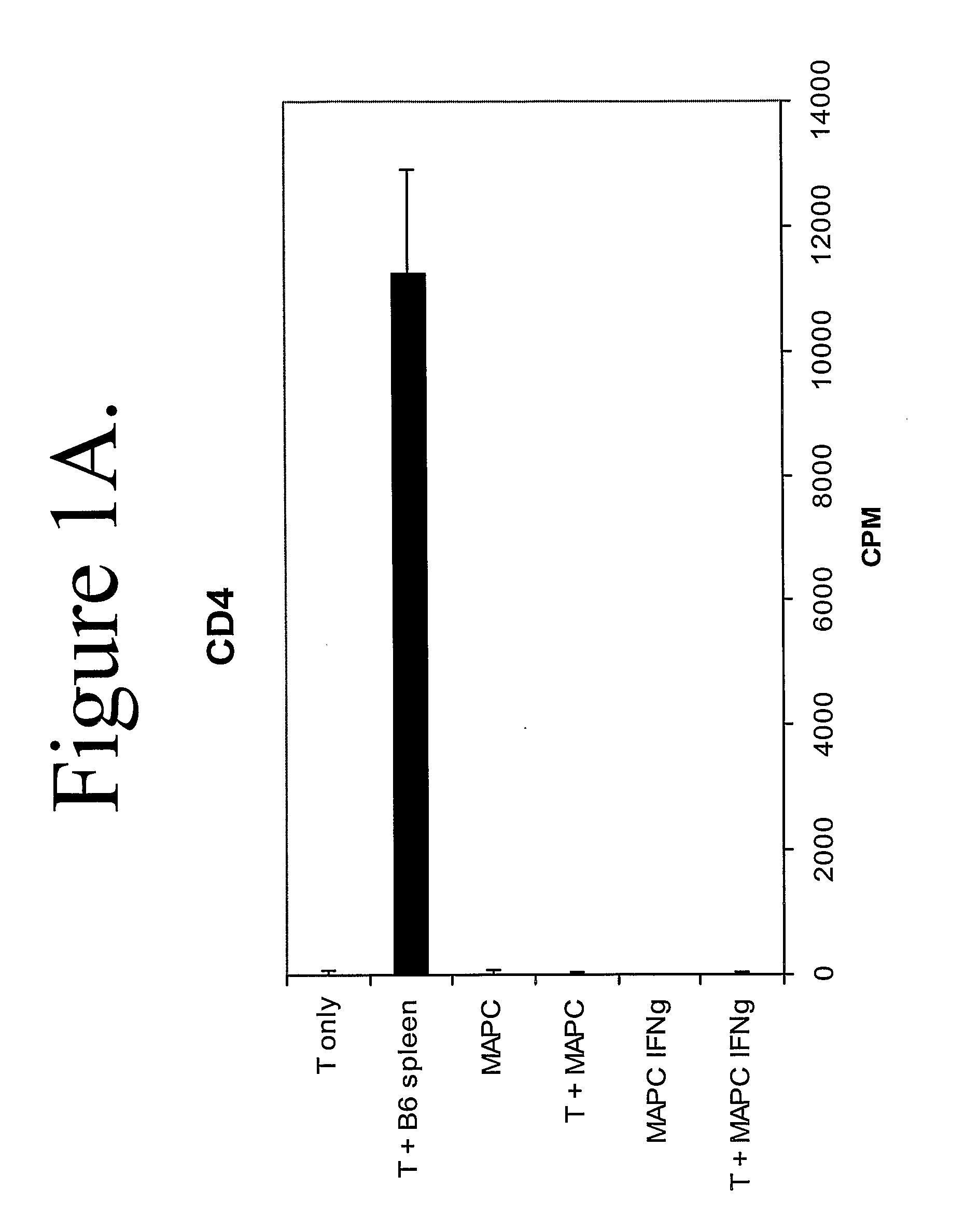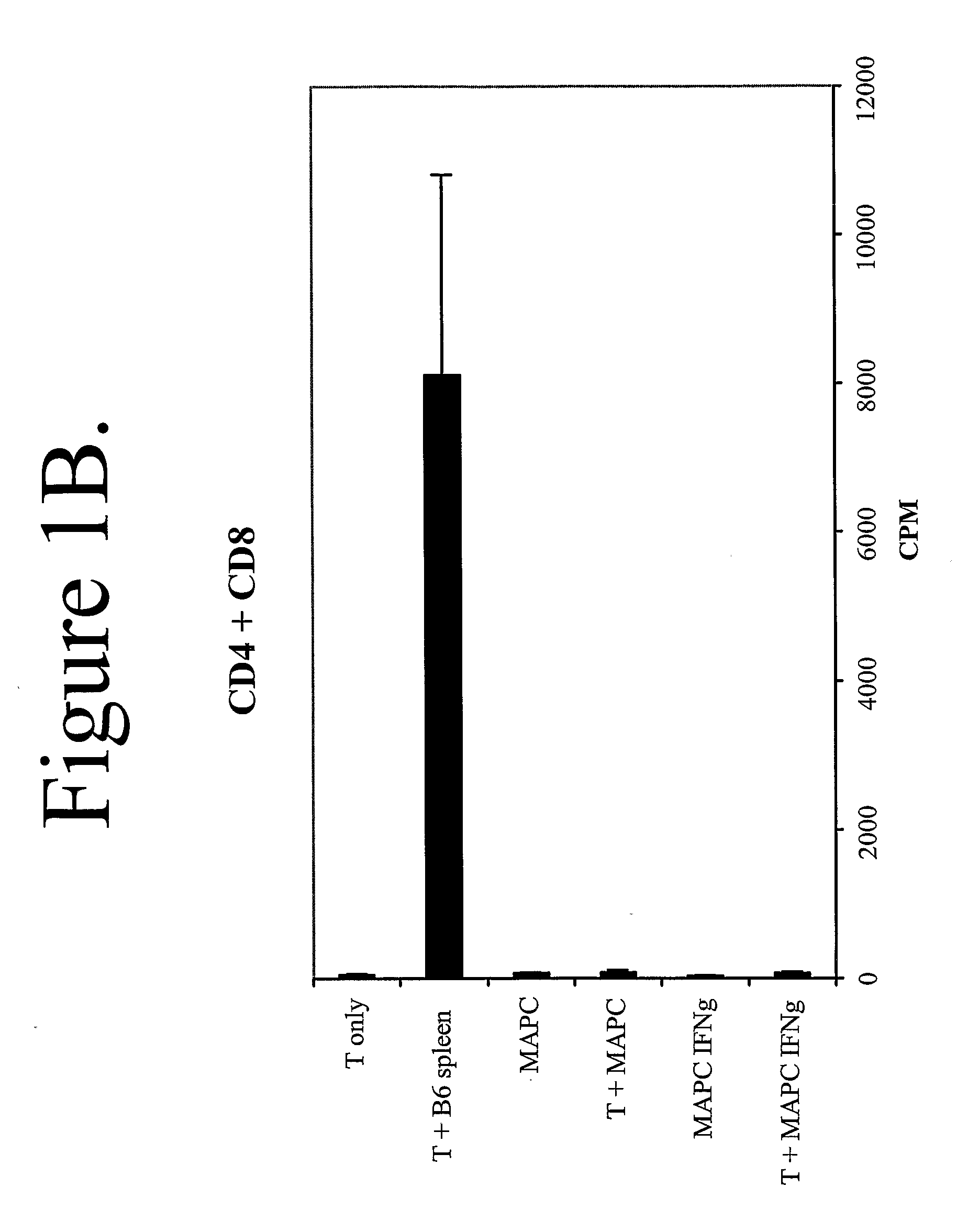Use of Nk Cell Inhibition to Facilitate Persistence of Engrafted Mhc-I-Negative Cells
a technology of mhc-i-negative cells and nk cell inhibition, which is applied in the field of nk cell inhibition to facilitate the persistence of engrafted mhc-i-negative cells, can solve the problems of inability to provide a source of cells for repair of other damaged tissues, limited cellular therapy, and inability to provide hematopoietic lineage cells with cells, etc., to achieve the effect of increasing the persistence of mhc-i-
- Summary
- Abstract
- Description
- Claims
- Application Information
AI Technical Summary
Benefits of technology
Problems solved by technology
Method used
Image
Examples
example 1
Materials and Methods
[0292]Mouse Strains
[0293]C57BL / 6 and recombinase activating gene-2 deficient (Rag2− / −) mice were obtained from The Jackson Laboratory (Bar Harbor, Me.) and Taconic Farms (Germantown, N.Y.), respectively. Mice carrying mutations in the recombinase activating gene 2 and the common cytokine receptor (Rag2− / −-IL-2Rγc− / −) were a gift from Dr. Stephen Jameson (University of Minnesota). All mice were housed under specific-pathogen free conditions, fed ad libitum according to University of Minnesota Research Animal Resources guidelines, and used at 6-12 weeks of age.
[0294]NK Depletion
[0295]To deplete NK cells in vivo, some mice were injected with anti-NK1.1 monoclonal antibody (hydridoma PK136, rat IgG2a; provided by Dr. Koo, Rahway, N.J.) 3 days before MAPC infusion and then twice a week for 30 days.
[0296]Bone Marrow Transplantation
[0297]B10.BR mice (H2d) were lethally irradiated with 8.0 Gy by x-ray on the day prior to transplantation of with 20×106 C57BL / 6 (H2b) bone...
PUM
| Property | Measurement | Unit |
|---|---|---|
| cell-doubling time | aaaaa | aaaaa |
| volume | aaaaa | aaaaa |
| integration time | aaaaa | aaaaa |
Abstract
Description
Claims
Application Information
 Login to View More
Login to View More - R&D
- Intellectual Property
- Life Sciences
- Materials
- Tech Scout
- Unparalleled Data Quality
- Higher Quality Content
- 60% Fewer Hallucinations
Browse by: Latest US Patents, China's latest patents, Technical Efficacy Thesaurus, Application Domain, Technology Topic, Popular Technical Reports.
© 2025 PatSnap. All rights reserved.Legal|Privacy policy|Modern Slavery Act Transparency Statement|Sitemap|About US| Contact US: help@patsnap.com



